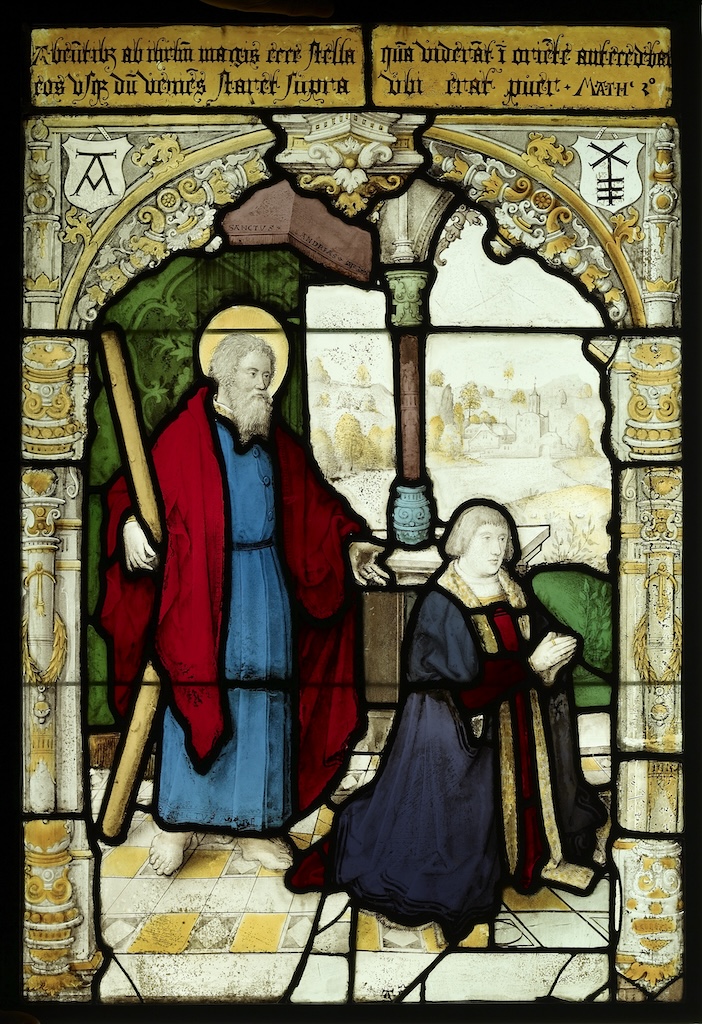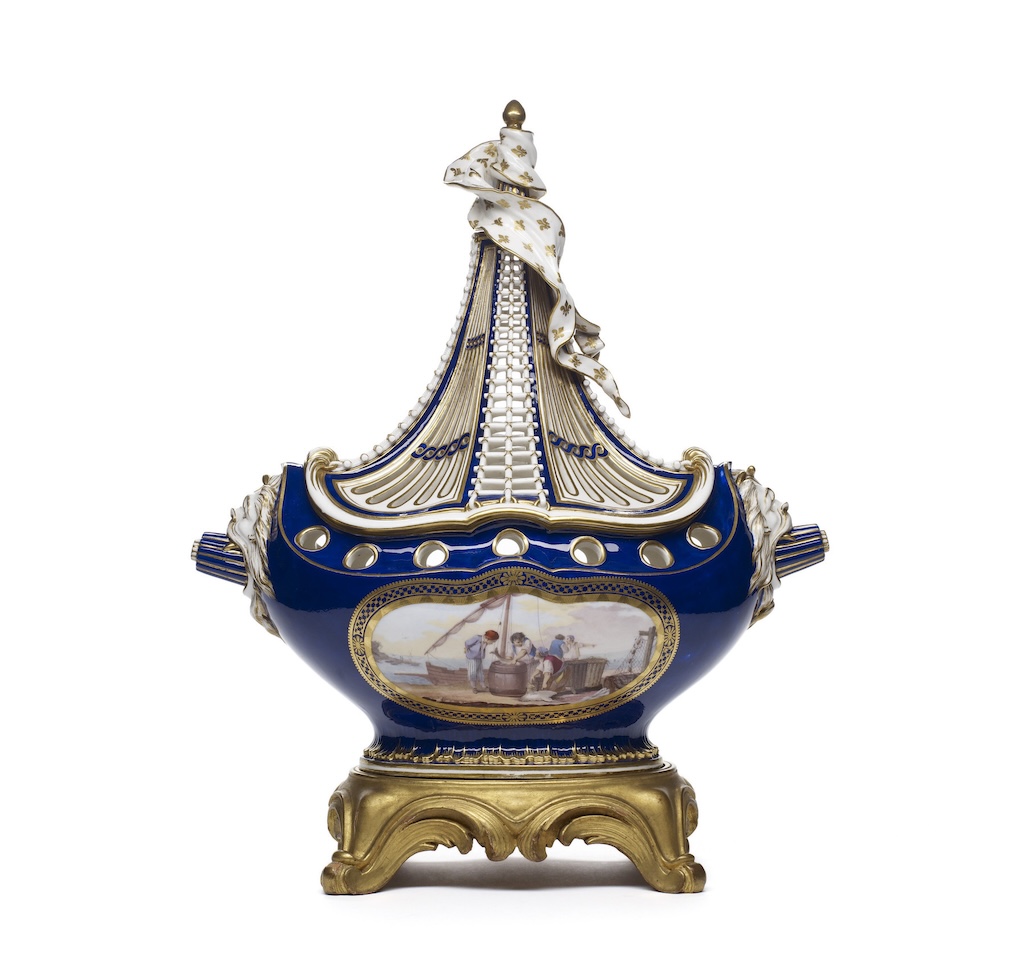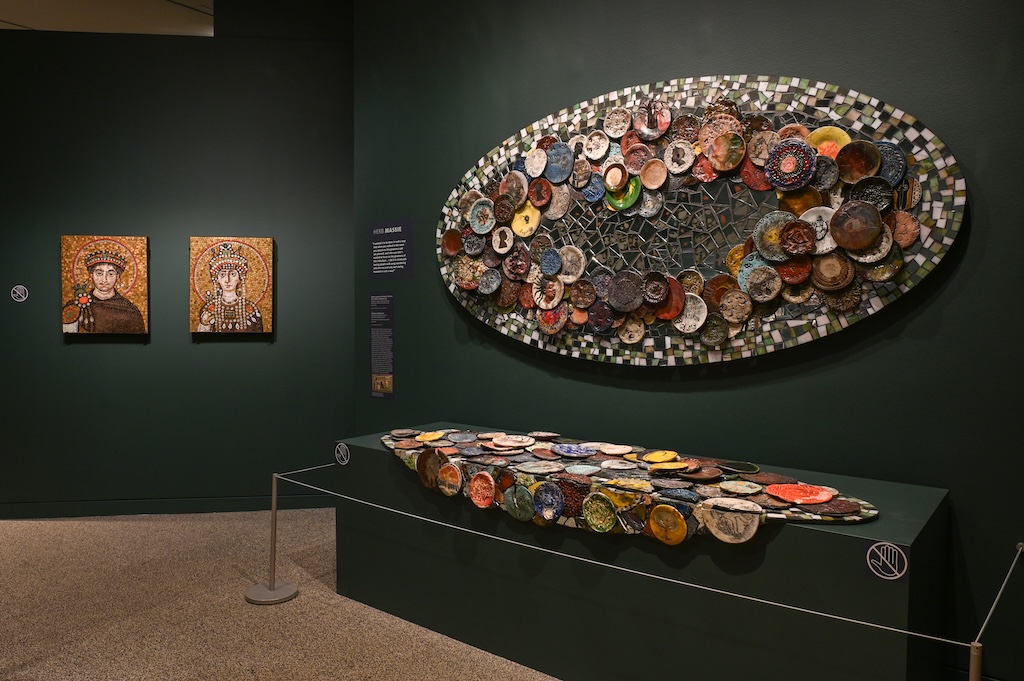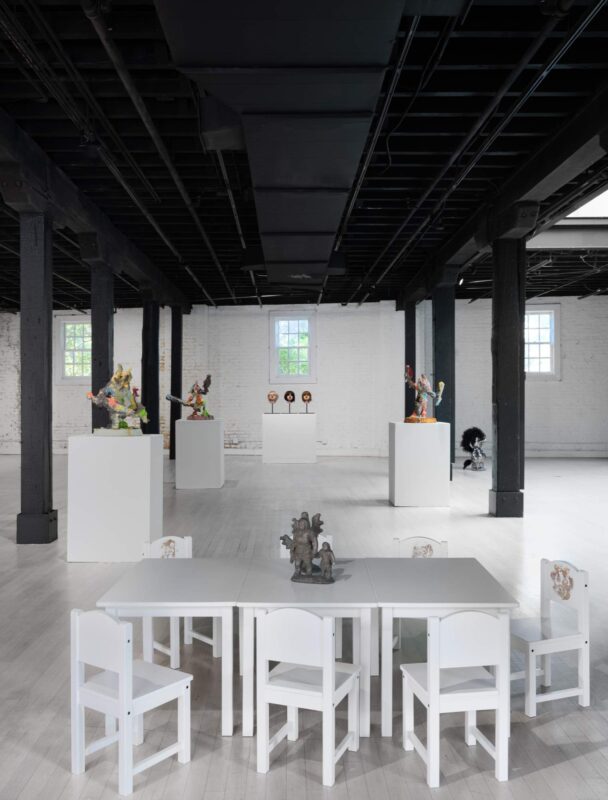Nearby, a sprawling 2018 installation by Herb Massie, a Baltimore-based artist and teacher, alludes to the often overlooked history of Sybby Grant, an enslaved cook who lived and worked at nearby 1 West Mount Vernon Place in the mid-1800s. In partnership with Jubilee Arts, Massey led members of the community in making more than 200 ceramic plates that speak to aspects of Grant’s life, and to African-American history more generally.
Massie’s installation is polyvocal, muscular, and enthusiastically inclusive. Its placement next to two early 20th-century Murano glass mosaics of Emperor Justinian and Empress Theodora, however, is confusing and arguably ungenerous. Do the curators really expect the communal efforts of untrained Baltimore citizens to hold their own in relation to the tight professionalism of studio-made mosaics? Perhaps, though, one could argue for a meaningful thematic connection. For, much as the Byzantine mosaics originally stood in the chancel of a church, suggesting the virtual participation of the distant king and queen, Massie’s piece testifies to an absent presence while taking its place in a tradition of commemoration.
In any event, other highlights await. A sublime bowl made by Tsuruka Yoshitaka in 2012 employs slips in ways that would have been notionally familiar to earlier Japanese ceramists, but that also displays an elegant grasp of the principles of modern abstraction. A 15th-century Tibetan mandala, painted in glue tempera and featuring an astonishing level of detail, holds its own in the presence of a recent abstraction by Anil Revri. And while the placement of Ingres’ “Reclining Venus” (1822) near Hans Schuler’s sculpture of a nereid reclining on a wave feels a bit obvious, Schuler’s remarkable carving abilities reward in full: studying his work is like attending a master class in the varied handling of marble.
Along the way, there are also a few interactive elements. Audio stations offer thoughts from three of the featured contemporary artists (Wiley comes across as crisp and polished in his analysis of history as a material, while Jessy DeSantis’ discussion of ethnocide via a local podcast feels more raw and informal).
Magnifying glasses facilitate a closer study of several pieces, including a breathtakingly tiny 1952 printing of the Lord’s Prayer in seven languages—which was said to be, when issued, the smallest book in the world. You may find yourself wishing that you could hold that microscopic text to test its apparent weightlessness, but perhaps you’ll be partly mollified by a reproduction of a Japanese woodblock, whose vigorous contours reward curious fingertips.
















